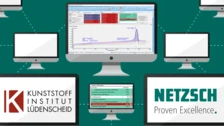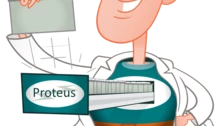

Success with Smart Data
Huge database to identify unknown polymers using DSC
In cooperation with the Kunststoff-Institut Lüdenscheid, NETZSCH-Gerätebau offers a polymer data-base for DSC analysis.
1150
169
Automated
Each material is labelled with the appropriate trade name. Information about the colors and fillers is also available.
Additionally, updates and expansions of the database are offered on a regular basis.
The integration of the extensive database of the Kunststoff-Institut Lüdenscheid into the software Identify for the identification of curves makes polymer applications considerably easier for the DSC user.
Together with the automatic, user-independent evaluation of the DSC measurements by means of AutoEvaluation, a faster assignment and a more meaningful interpretation of the measurement results is possible.

Contact
What's Identify?
In the field of thermal analysis, Identify is the only software of its kind (beginning with Proteus®® version 7.1; applicable to DSC, TGA, DIL, TMA and Specific Heat Capacity (cp)Heat capacity is a material-specific physical quantity, determined by the amount of heat supplied to specimen, divided by the resulting temperature increase. The specific heat capacity is related to a unit mass of the specimen.cp curves).
Via database comparisons, it only takes a few seconds for Identify to identify and classify materials. With a single click, experimental curves (even ones that are not yet evaluated) can thus be checked for agreement with stored individual curves, literature data or statistical classes. The NETZSCH libraries supplied include more than 1,300 entries from the application fields of polymers, organics, food, pharma, metals/alloys, ceramics and inorganics, as well as the chemical elements. When using Identify, a hit list is produced – of the type known, for example, in spectroscopy. The various hits on the list can be integrated into the evaluation graphs with a single click of the mouse. For comparison purposes, any measurement curves can even be superimposed onto each other – even those of differing types.



